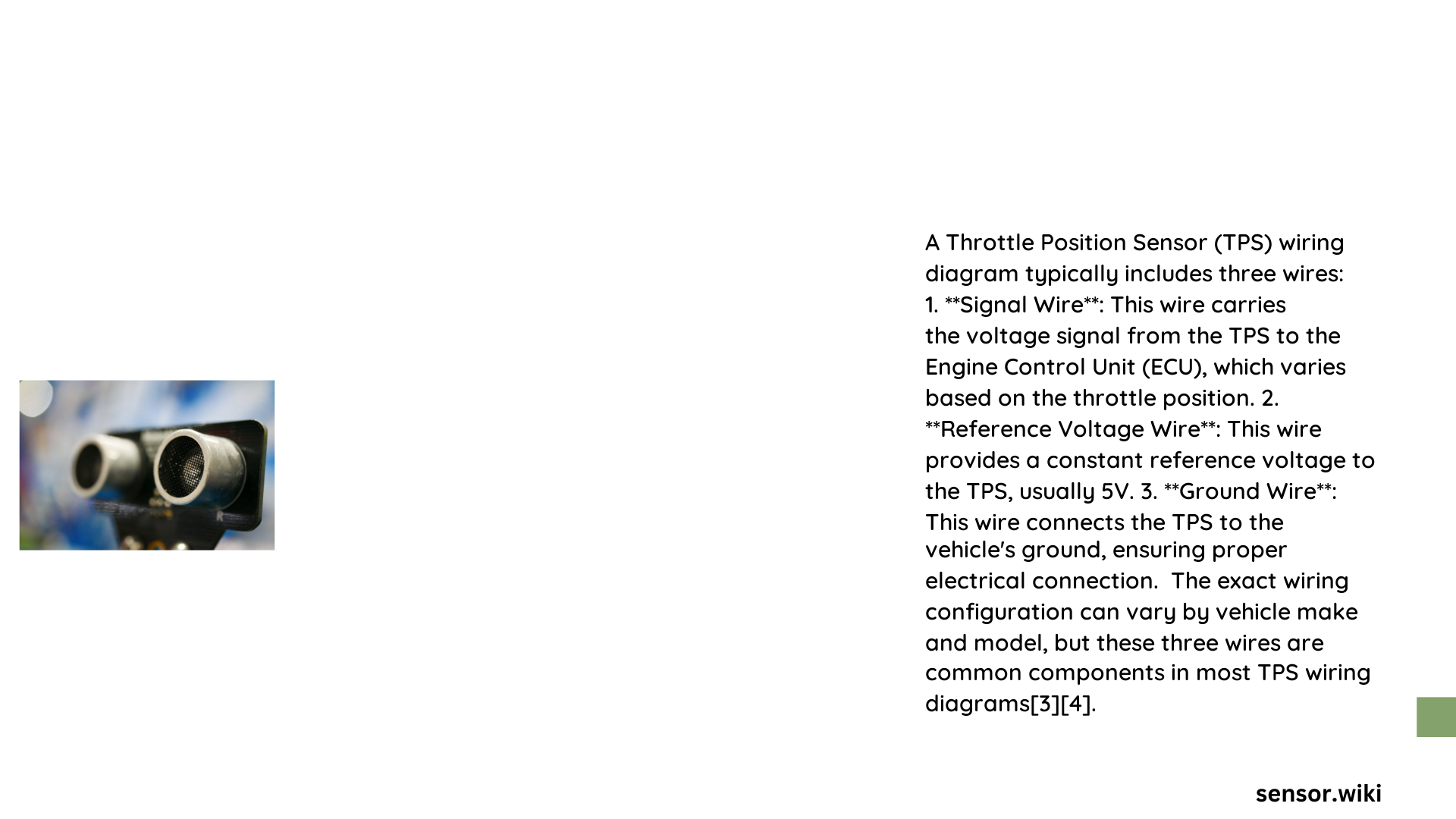A throttle position sensor (TPS) wiring diagram is a critical electrical schematic that illustrates the precise connections, color codes, and voltage specifications for accurately mapping throttle position in automotive systems. Understanding these intricate wiring configurations helps mechanics and automotive enthusiasts diagnose, install, and troubleshoot sensor connections with precision, ensuring optimal engine performance and electronic control module (ECM) communication.
What Are the Basic Components of a TPS Sensor?
A typical TPS sensor consists of three primary terminals:
- Ground Terminal
- Provides electrical reference point
- Usually connected to vehicle’s ground system
-
Typically black or gray wire
-
Signal Output Terminal
- Transmits throttle position data
- Sends variable voltage signals
-
Often green or white with colored stripe
-
5V Reference Terminal
- Supplies constant voltage
- Enables sensor functionality
- Commonly orange or brown wire
How Do Different Vehicle Manufacturers Wire TPS Sensors?

Ford Vehicle TPS Wiring Configurations
| Manufacturer | Ground Wire | Signal Wire | Reference Wire |
|---|---|---|---|
| Early Ford | Black | Green | Orange |
| Late Ford | Gray/Red | Gray/White | Brown/White |
General Motors TPS Wiring
- Ground: Black wire
- Signal: Yellow wire
- Reference: Red wire
What Voltage Ranges Should You Expect?
Typical TPS voltage ranges include:
- Idle Position: 0.35V – 1.58V
- Wide Open Throttle (WOT): 3.65V – 4.5V
- Closed Throttle: Approximately 0.5V
How to Diagnose TPS Wiring Issues?
Diagnostic Steps
- Use multimeter for resistance measurements
- Check voltage at different throttle positions
- Verify ground connections
- Test reference voltage stability
- Inspect wire integrity and connectors
What Are Common Wiring Troubleshooting Techniques?
- Resistance Testing
- Measure resistance between terminals
- Identify fixed and variable resistance points
-
Compare readings with manufacturer specifications
-
Voltage Verification
- Use oscilloscope for precise signal analysis
- Check voltage transitions during throttle movement
- Ensure smooth, consistent signal progression
Best Practices for TPS Sensor Wiring
Recommended Installation Guidelines
- Always disconnect battery before wiring
- Use proper wire gauge
- Secure connections with heat shrink tubing
- Avoid excessive wire tension
- Protect wiring harness from heat and mechanical stress
Technical Considerations for Accurate Wiring
Precision Matters
Accurate TPS sensor wiring ensures:
– Optimal fuel injection
– Precise engine timing
– Improved overall vehicle performance
– Reduced emissions
– Enhanced fuel efficiency
Advanced Diagnostic Techniques
Professional Evaluation Methods
- Use professional diagnostic scanners
- Perform live data stream analysis
- Compare actual vs. expected voltage curves
- Check for intermittent connection issues
Conclusion
Mastering the TPS sensor wiring diagram requires understanding complex electrical interactions, precise measurement techniques, and manufacturer-specific configurations. Proper installation and diagnostic skills are crucial for maintaining vehicle performance and reliability.
